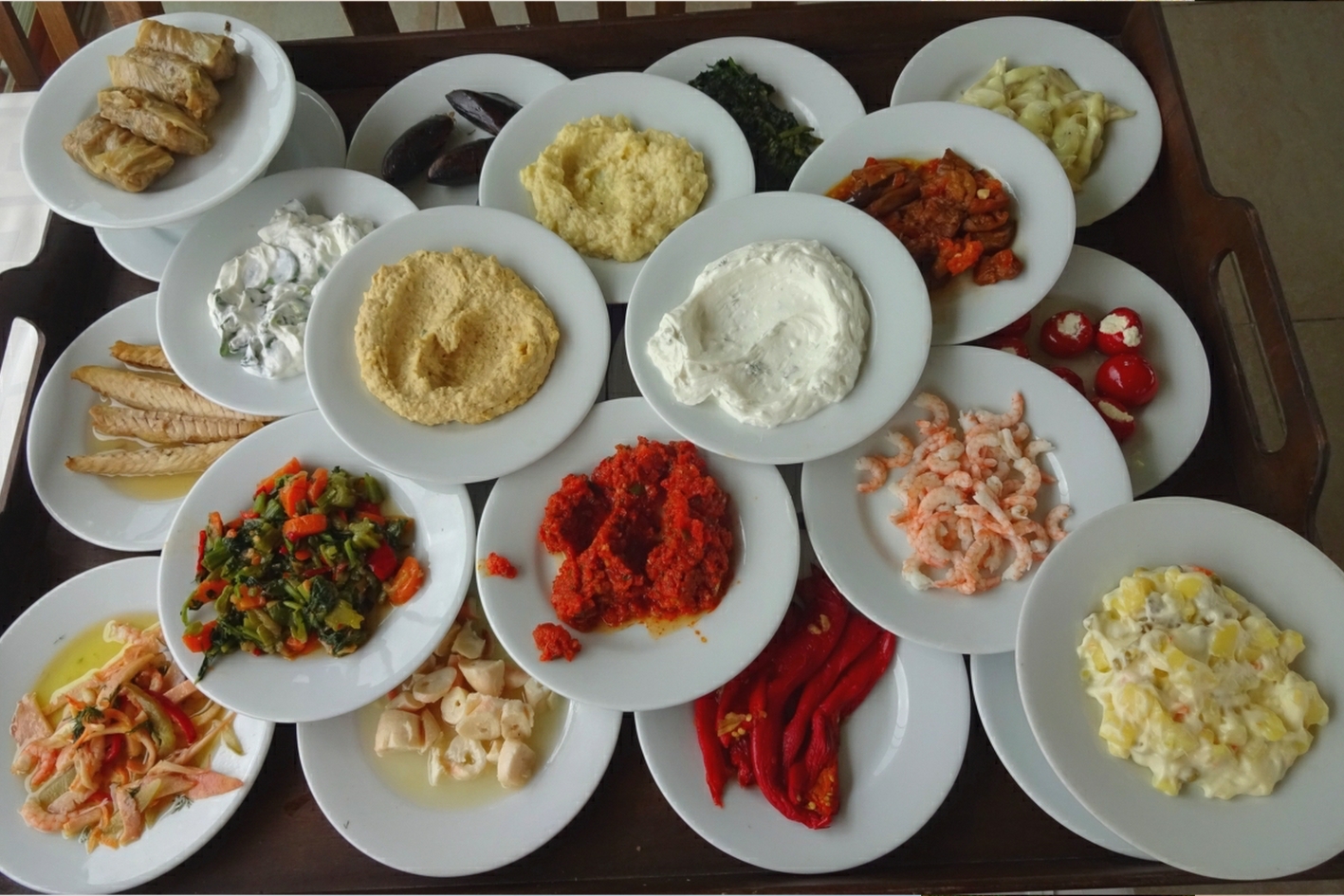
A cherished Turkish tradition
" meze is not a one-size-fits-all concept. Its character changes from region to region, shaped by local ingredients and traditions "
In Turkish cuisine, meze is more than a collection of appetisers. It’s a cherished tradition rooted in community, conversation and culinary artistry. Typically served before the main course, especially alongside rakı (Türkiye’s beloved anise-flavoured spirit), meze reflects the cultural diversity of the country and the abundance of its regions.
Nationally, a standard meze spread might include creamy haydari (thick yoghurt with garlic and herbs), patlıcan salatası (smoky aubergine purée), hummus and acılı ezme (spicy tomato and pepper paste). These dishes are served with fresh bread. Designed to be shared to encourage a leisurely pace and warm social atmosphere.
Yet meze is not a one-size-fits-all concept. Its character changes from region to region, shaped by local ingredients and traditions.
In the Aegean and Mediterranean coastal areas, meze often leans towards olive oil-based dishes and seafood. You’ll find enginar dolması (stuffed artichokes), fava (mashed broad beans), and marinated octopus or anchovies. The use of wild herbs, such as ebegümeci (mallow) or radika (wild chicory), is also common, lightly sautéed and served cold with olive oil and lemon.
In the southeast, where culinary influences blend with Arab and Kurdish traditions, meze tend to be spicier and richer. Think çiğ köfte*, the classic Turkish-style steak tartar, (normally made with high quality fat free beef with a vegan variation made with bulgur or lentils), fellah köftesi (bulgur meatballs in a garlicky tomato sauce), or roasted pepper salads bursting with garlic and pomegranate molasses.
In the Black Sea region, known for its rugged terrain and cooler climate, dairy plays a larger role. You may encounter unique offerings like mihlama, a gooey mixture of cornmeal, butter and local cheese, or pickled vegetables and anchovies reflecting the area’s seafaring culture.
Meze also plays a central role in Türkiye’s rakı keyif sofrası (lit. rakı pleasure table). A traditional dinner table where food, music, drink and conversation intertwine. The meal unfolds slowly, often over hours, allowing time to savour each dish and every story shared.
Ultimately, Turkish meze is a living tradition: regional yet national, simple yet refined, everyday yet celebratory. It represents the spirit of Turkish hospitality: welcoming, generous, and full of flavour.
Prepared by a Chaîne News Online Staff Writer
Researched from various sources. E&OE
* Ciğ köfte is made with very high-quality, fat-free beef, minced and kneaded together with fine bulgur, pepper, tomato paste, onion, garlic, and a mixture of Turkish spices. The key is in the kneading. The longer mixture is kneaded the better the texture will be. Be sure to let your mixture rest for at least five hours before serving. This recipe calls for Turkish isot biber, a pepper with an intense and unusual flavour.